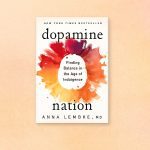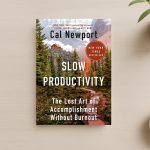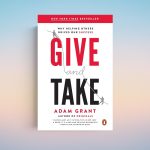Range: Why Generalists Triumph in a Specialized World by David Epstein challenges the belief that early specialization is the surest path to success. Drawing on research from psychology, sports science, business, and education, Epstein shows that in complex, unpredictable environments, generalists-those with diverse experiences and adaptable skills-excel by connecting ideas across domains. Through vivid stories, from Roger Federer’s late specialization to cross-disciplinary scientific breakthroughs, Range by David Epstein makes a compelling case for cultivating breadth before depth. Range is both a myth-buster and a practical guide for thriving in a rapidly changing world where adaptability often outperforms narrow expertise.
1. Introduction to Range by David Epstein
In Range: Why Generalists Triumph in a Specialized World, journalist and former senior writer for Sports Illustrated David Epstein challenges one of the most entrenched beliefs in modern culture: that early specialization is the only path to success in today’s complex and competitive world. The book examines how people who cultivate broad interests, diverse skills, and adaptable thinking – generalists – often outperform deep specialists, particularly when navigating complex, unpredictable, and rapidly changing environments.
Through research from psychology, education, sports science, organizational behavior, and case studies drawn from science, art, business, and athletics, Range by David Epstein explores the limits of hyperspecialization and makes the case for breadth over premature depth. His central message: in domains where rules aren’t tightly defined and future conditions are uncertain, a wide range of experiences fosters creativity, better problem solving, and long-term adaptability.
2. Author Biography: David Epstein
David Epstein is an investigative reporter who has written extensively about human performance, science, and sports. A former competitive runner, he earned a master’s degree in environmental science and journalism from Columbia University.
His career began with covering environmental issues before transitioning to sports science and investigative features for Sports Illustrated. Epstein’s work often blends storytelling with scientific insight, probing how physiology, psychology, and societal structures shape performance.
His first book, The Sports Gene (2013), examined the interplay of genetics and environment in athletic achievement. In Range (2019), Epstein expands his focus beyond sports to explore performance and innovation across multiple sectors. His style is characterized by integrating data-driven research with narrative storytelling, making complex science accessible and engaging.
3. Central Thesis and Framework
Epstein’s thesis hinges on the distinction between:
Kind Learning Environments: Domains with clear rules, repeatable patterns, high feedback, and predictable cause-effect relationships (e.g., chess, golf). Here, early specialization confers advantages because mastery depends on repetitive practice in a narrow, stable domain.
Wicked Learning Environments: Domains where rules are unclear, patterns are non-repeating, feedback is delayed or misleading, and conditions change unpredictably (e.g., scientific research, entrepreneurship, policy-making). Here, generalists thrive because they draw upon varied experiences to adapt and innovate.
Range by David Epstein argues that our cultural obsession with the Tiger Woods model-starting early, practicing intensively, specializing narrowly-is often misplaced outside of kind domains. In wicked domains, the Roger Federer model-sampling widely before settling into a focus-produces longer, more versatile careers and richer problem-solving capacities.
4. Structure Overview and Chapter-by-Chapter Analysis
Introduction – Roger vs. Tiger
Epstein contrasts Tiger Woods, who specialized in golf before age two under intense parental guidance, and Roger Federer, who played multiple sports casually before committing to tennis in his teens. While Tiger epitomizes hyper-specialization, Federer represents broad sampling. Despite starting later, Federer became one of the most successful tennis players in history. This dichotomy frames the book’s exploration of breadth versus depth.
Chapter 1 – The Cult of the Head Start
Epstein critiques the societal obsession with starting early. The “10,000 hours rule” popularized by Malcolm Gladwell (misinterpreting research by Anders Ericsson) is frequently invoked to justify early specialization. But the original research was context-specific to music and chess-kind domains. In many fields, early specialization can lead to burnout, plateauing, or skill mismatch when environments evolve.
Key insight: In wicked domains, variety in early experiences builds adaptable mental models and prevents cognitive fixation.
Chapter 2 – How the Wicked World Was Made
Here, Epstein introduces kind vs. wicked learning environments via psychologist Robin Hogarth’s framework.
– Kind environments: patterns are consistent, feedback is accurate, knowledge is transferable within the domain.
– Wicked environments: patterns are inconsistent, feedback is delayed/misleading, and rules change with context.
Examples:
– Kind: firefighting drills.
– Wicked: real-world firefighting with unpredictable scenarios.
Complex modern challenges – from climate policy to business strategy – are wicked. They demand analogical thinking, creativity, and cross-field borrowing.
Chapter 3 – When Less of the Same Is More
While specialists gain speed in familiar tasks, they often falter outside their domain of comfort. Diverse early experiences can appear inefficient in the short term but pay off in adaptability and long-term mastery.
Range by David Epstein draws from sports data: eventual elite athletes often spend less childhood time in their main sport, more time in various activities, delaying specialization until late adolescence. This “sampling period” develops transferable motor skills, self-knowledge, and resilience.
Chapter 4 – Learning, Fast and Slow
Drawing on Daniel Kahneman’s Thinking, Fast and Slow, Epstein explores two systems of thought:
– System 1: fast, intuitive, reliant on pattern recognition.
– System 2: slow, analytical, reliant on conscious reasoning.
Specialists excel when System 1 patterns match the domain. But in wicked environments, reliance on System 1 can be misleading. Generalists, with broader analogical databases, are better at knowing when to switch to slow thinking.
Chapter 5 – Thinking Outside Experience
Most innovation occurs at the intersection of disciplines. Epstein illustrates through examples like:
– Kepler’s laws of planetary motion – inspired by analogies from music and geometry.
– Frances Hesselbein’s management success at the Girl Scouts – transferring strategies across radically different domains.
Analogical thinking, borrowing concepts from distant fields, is a hallmark of successful problem solvers in changing contexts.
Chapter 6 – The Trouble with Too Much Grit
Epstein problematizes the modern valorization of grit (passion + perseverance). While perseverance is important, sticking too long to a losing course can be counterproductive. Sometimes quitting early opens paths to better matches between talent, interest, and opportunity.
Analogy: a startup founder pivoting early after testing reveals flaws is often more successful than one who stubbornly resists change.
Chapter 7 – Flirting with Your Possible Selves
Self-discovery is iterative. Epstein cites research on career changers showing long-term satisfaction is higher among those who experimented with multiple paths before settling. Early career breadth gives people richer perspectives and helps avoid the sunk-cost trap.
Example: Successful innovators often collect diverse experiences before identifying their best fit.
Chapter 8 – The Outsider Advantage
Range by David Epstein shows how outsiders – people without conventional credentials in a field – often bring breakthrough insights because they are not constrained by existing mental ruts.
Cases:
– Nintendo’s Shigeru Miyamoto – trained in industrial design, not computer science.
– The “Polymath” tradition – da Vinci, Franklin – drawing across arts, sciences, and engineering.
Chapter 9 – Lateral Thinking with Withered Technology
Innovation often comes from applying old tools in new contexts or recombining ideas from different fields. Epstein references Gunpei Yokoi’s video game designs and the concept of “lateral thinking with withered technology” – using mature, stable technologies in novel ways.
Chapter 10 – Fooled by Expertise
Specialists can become overconfident outside their niche – the overreach of domain-specific expertise. In rapidly changing or ambiguous situations, their deep but narrow models may mislead.
Example: Financial experts predicting market crashes with high certainty – often wrong due to model blindness.
Chapter 11 – Learning to Drop Your Familiar Tools
Some failures occur because individuals or organizations cannot abandon approaches that no longer work. Epstein uses tragedies like wildland firefighting disasters, where clinging to equipment or procedure in shifting conditions led to fatalities.
Lesson: adaptability requires willingness to shed habits, even cherished tools, when conditions demand.
Chapter 12 – Deliberate Amateurs
Epstein ends by celebrating “deliberate amateurs” – professionals who cultivate curiosity, keep learning outside their domain, and are open to exploring unrelated interests. These people often make novel contributions because of their outsider-like openness combined with insider-level competence.
Conclusion – Expanding Your Range
The final section synthesizes the evidence: breadth is not opposed to excellence. In many modern challenges, generalists outperform specialists over the long haul by:
- Integrating diverse experiences.
- Adapting to change.
- Innovating through cross-pollination of ideas.
5. Core Themes and Insights
Delayed Specialization Works Better in Complex Fields: Sampling prevents premature foreclosure on suboptimal paths.
Breadth Enhances Problem-Solving: Diverse experiences supply analogies that can be applied across contexts.
Adaptability Is Crucial: In volatile environments, flexible thinking outpaces narrowly trained expertise.
Over-Specialization Can Hurt: Limits ability to adapt and can lead to brittle skill sets.
Curiosity and Lifelong Learning Matter: Continuous self-education across fields prevents stagnation and maintains mental agility.
6. Integration with Contemporary Context
In a 21st-century landscape defined by rapidly evolving technology, shifting economies, and complex global problems, the lessons of Range have broad application:
– Education: Shift from front-loaded specialization to curricula that emphasize exploration and interdisciplinary learning.
– Careers: Encourage lateral moves, career experimentation, and cross-sector collaboration.
– Organizational design: Value and promote “cultural translators” who bridge disciplines.
– Innovation policy: Support environments that reward breadth as well as depth.
7. Critiques and Counterpoints
Some critics note:
– In kind environments, competition may demand early focus – Range does not dispute this but argues it’s domain-specific.
– The book’s argument sometimes overgeneralizes from sports and prominent innovators.
– Implementation challenges exist in educational systems designed around early-tracked pathways.
Still, the balance of research presented strongly supports Epstein’s claims for wicked environments.
8. Enduring Value
Range by David Epstein joins the growing body of literature urging rethinking of conventional success pathways. Like works by Howard Gardner on multiple intelligences or Scott Page on diversity of thought, it provides both a theoretical framework and practical examples that resonate across professions.
Its appeal lies in reassurance to those who started “late” or meandered early: these varied experiences are often superpowers, not liabilities.
9. Conclusion: Range by David Epstein
Range by David Epstein is both a defense and celebration of the generalist in an age obsessed with narrow mastery. By weaving biography, sports stories, cognitive science, and organizational research, Epstein dismantles the myth that success always favors those who specialize young and deep. In complex and unpredictable worlds, breadth, adaptability, and the capacity to connect dots across domains are often what enable real breakthroughs.
The takeaway is not to reject specialization, but to question its timing and to recognize the compounded value of varied experiences. In a future where the only constant is change, range may be the most vital asset of all.
If you found this summary helpful, please share it or leave a comment below.



















